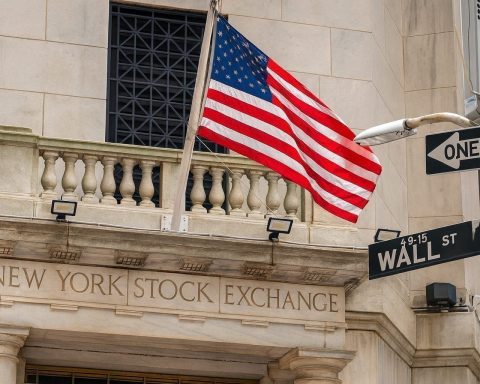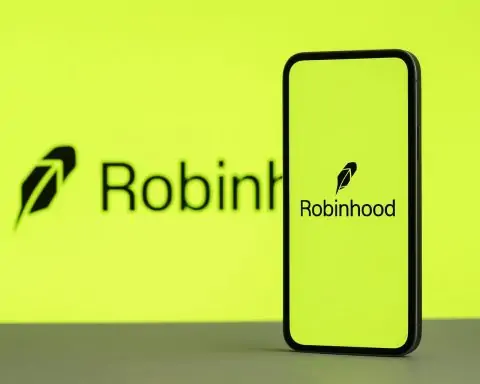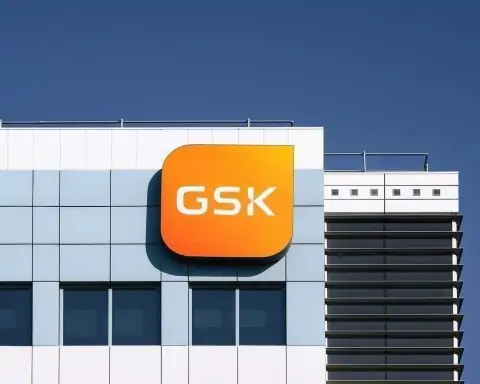- Record Quarter: Online used-car retailer Carvana delivered a blowout Q3 2025 earnings report, with revenue surging 55% year-over-year to $5.65 billion and net income hitting a record $263 million [1]. It sold ~156,000 vehicles in Q3 (up 44% YoY), helping push annual revenue to a $20B run-rate for the first time [2]. However, profit margins tightened slightly, and earnings per share of ~$1.03 fell short of ~$1.30 expected [3].
- Stock’s Wild Ride:CVNA stock has skyrocketed roughly 78% year-to-date [4] amid Carvana’s turnaround to profitability. Shares hit a 52-week (and all-time) high around $413 in late July [5] before pulling back. The stock closed near $354 on Oct. 29 ahead of earnings [6], then plunged ~10% to the mid-$310s after-hours as investors took profits and reacted to the mixed results [7] [8].
- Analysts Bullish on Upside: Despite the post-earnings dip, Wall Street remains largely optimistic. Roughly two-thirds of analysts rate CVNA a “Buy,” with only a couple recommending Sell [9]. The average 12-month price target sits in the mid-$420s – about 20–30% above the latest share price [10]. J.P. Morgan, Jefferies, and BTIG all recently raised their targets (to ~$490, $475, and $450 respectively) on Carvana, expecting more growth ahead [11] [12].
- Red Flags & Risks: Not everyone is convinced. Noted short-seller Jim Chanos warns of “lots of red flags” at Carvana amid rising auto-loan delinquencies and a collapsed subprime lender in the used-car market [13]. “Given the news in the subprime auto space of defaults, bankruptcies, rising delinquencies, the fact that Carvana seems to be sailing through it with nary a scratch stretches credulity,” Chanos said [14]. Industry-wide, loan defaults have spiked – subprime delinquency rates have doubled since 2021 to levels worse than the past three recessions [15] – and rival CarMax’s stock plunged 20% after a weak quarter [16], signaling stress on lower-income car buyers.
- Outlook – Growth vs. Valuation: Carvana’s management remains confident, forecasting over 150,000 vehicle sales in Q4 and raising full-year 2025 profit guidance toward the high end of $2.0–$2.2 billion (adjusted EBITDA) [17]. That implies continued rapid growth into year-end. Bulls note Carvana’s innovative online model and recent moves (like same-day delivery in new markets) position it to grab more share of the $800B used-car market [18]. However, the stock’s valuation (over 50× earnings, richer than traditional auto dealers [19]) and Carvana’s hefty debt load temper the enthusiasm. Even some fans caution that Carvana must prove it can sustain margins and growth; as one strategist put it, “with expectations sky-high… any stumble in guidance, and momentum traders could hit reverse just as fast as they hit the gas” [20].
Carvana Stock’s Wild Ride in 2025
Carvana’s stock has been on a spectacular comeback over the past two years. During 2022’s market downturn, CVNA crashed 98%, briefly trading near penny-stock levels around $3–4 [21]. The tide turned in 2023 as Carvana restructured its debt and cut costs, and the rally accelerated through 2024 into 2025. As of late October 2025, shares have soared roughly 78% year-to-date [22], vastly outperforming the broader market. In fact, from its 2022 lows to its 2025 peak, Carvana logged an astounding 9,000% rebound [23] – catapulting its market capitalization above $80 billion at one point, briefly eclipsing legacy automakers like Ford and GM [24].
This meteoric rise hasn’t been smooth. Volatility is the norm for CVNA: the stock has seen over forty daily moves larger than 5% in the past year alone [25]. It hit an all-time high of about $413 per share in late July 2025 [26] amid optimism about the company’s turnaround. But with such a swift climb, pullbacks have been sharp as well. By early fall, the stock had pulled back to the mid-$300s. When famed short-seller Jim Chanos publicly slammed Carvana’s transparency and the health of the subprime auto market on October 22, CVNA tumbled ~11% in a day [27]. Even so, heading into its Q3 earnings report, the stock was still trading around $360, buoyed by bullish analyst calls and an overall strong tech-stock environment.
Record-Breaking Q3 Earnings (and Aftermath)
Carvana’s third-quarter 2025 results, released October 29, validated much of the growth hype – on the surface. Revenue for the quarter came in at $5.65 billion, up 55% from a year ago and significantly above analyst estimates (~$5.1B) [28] [29]. This marked Carvana’s highest quarterly revenue ever, as unit sales jumped to ~155,941 vehicles sold. The company achieved a net profit of $263 million (about a 4.7% net margin), Carvana’s largest-ever quarterly profit [30]. Impressively, this was the sixth straight quarter of positive adjusted EBITDA for Carvana – a stark turnaround for a business that had been deep in the red until 2024 [31]. CEO Ernie Garcia III highlighted that Carvana delivered “industry-leading growth and profitability” while surpassing a $20B annual sales run-rate, crediting efficiencies from its vertically integrated online model [32].
Yet, despite the huge top- and bottom-line growth, there were signs of cooling underneath. Carvana’s all-important profitability metric – adjusted EBITDA margin – was 11.3%, a healthy figure but down slightly from 11.7% a year prior [33]. Higher marketing and reconditioning costs ate into margins, suggesting that the “easy” gains from cost-cutting might be leveling off. Additionally, earnings per share (diluted) of ~$1.03, while up from $0.64 a year ago, missed the ~$1.30 consensus expectation [34]. In other words, Carvana beat revenue estimates by a wide margin but didn’t blow away profit forecasts, which gave some investors pause.
The market’s reaction was swift. Immediately after the earnings release, CVNA shares plunged about 9–11% in after-hours trading [35] [36]. By midday on Oct. 30, the stock hovered around $315–$320 (down roughly 10% from the prior close) as traders digested the news [37] [38]. What triggered the sell-off despite record results? Profit-taking was one factor – Carvana’s stock had run up dramatically this year, so some investors seized the good news as an opportunity to lock in gains [39]. But more importantly, concerns emerged about the sustainability of Carvana’s margins and the broader economic backdrop. The slight dip in margin percentage, although small, raised questions about whether Carvana can keep scaling profitability at the same breakneck pace. “Traders zeroed in on the margin pressure – beat on revenue and net, but a miss on EPS – and that was enough to spark a sell-off after such a huge rally,” noted an Investing.com report [40]. In essence, sky-high expectations left little room for anything but a perfect report. As one market strategist observed just before the release: “With expectations sky-high and the stock already up sharply, this quarter is all about proving margins can expand without volume cracking… Any stumble in guidance, and momentum traders could hit reverse just as fast as they hit the gas.” [41] That warning proved prescient, as even a minor “stumble” on margins and guidance sparked a quick reversal in the stock’s momentum.
Wall Street Analysts Mostly Upbeat
Despite the post-earnings pullback, sell-side analysts are, on the whole, still bullish about Carvana’s trajectory. Analyst coverage of CVNA has leaned positive throughout 2025, and the latest results did little to shake their conviction. According to Bloomberg data, only 2 out of 23 analysts currently have a Sell rating on Carvana shares [42]. The rest are evenly split between Hold and Buy, with the vast majority recommending Buy or equivalent. MarketBeat similarly classifies Carvana as a “Moderate Buy” consensus, and shows an average 12-month price target around $418–$426 per share [43] – roughly 20% above the pre-earnings stock price, implying analysts see further upside ahead.
Several high-profile analyst calls in recent weeks underscored this optimism. For example, JPMorgan’s team, led by analyst Rajat Gupta, added Carvana to their “Positive Catalyst Watch” list and hiked their price target to ~$490 (from $425) just days before the earnings report [44]. Gupta maintained an Overweight rating, expressing confidence that Carvana would “deliver another beat” and arguing that concerns around auto credit risks were “overblown” [45]. Likewise, Jefferies analyst John Colantuoni kept his estimates “above Street” heading into Q3 and reaffirmed his Buy rating with a $475 target [46]. His research noted that web data suggested Carvana’s Q3 unit sales would handily top consensus, positioning the company for a fifth straight quarter of 40%+ revenue growth [47].
Other analysts have echoed bullish sentiments. BTIG’s Marvin Fong reiterated his Buy rating (target around $450) after the earnings, impressed by Carvana’s growth even as he keeps an eye on rising loan delinquencies [48]. And William Blair analyst Sharon Zackfia wrote that “evidence continues to mount that Carvana is in the early stages of a strong feedback loop as it scales,” predicting the company will keep setting record sales and earnings as its model gains traction [49]. In her view, Carvana’s virtuous cycle of more customers, more inventory, and more efficient operations is just beginning to pay off. That optimism is shared by many covering the stock: Carvana is frequently compared to a tech or high-growth retail story, rather than a traditional car dealer, which helps justify aggressive growth projections. Indeed, consensus forecasts anticipate Carvana’s revenue will continue growing at a rapid clip into 2026, and that the company will remain solidly profitable going forward. The next big catalyst will be Q4 and holiday-season results – and as of now, most analysts expect Carvana’s winning streak to continue into the next quarter.
Skeptics Cite Debt and Delinquencies
On the other side of the debate, skeptics and short-sellers see Carvana’s rally as overdone, warning that significant risks could spoil the party. Leading the bearish camp is Jim Chanos, the famed investor known for spotting trouble (he famously shorted Enron). Chanos has loudly questioned Carvana’s fundamentals in light of growing stress in the auto finance arena. “Given the news in the subprime auto space of defaults, bankruptcies, rising delinquencies, the fact that Carvana seems to be sailing through it with nary a scratch stretches credulity,” Chanos said in an interview, expressing doubt that Carvana can remain unscathed by a wave of credit issues hitting the industry [50]. Recent data backs up some of his concern: auto-loan delinquencies are climbing fast, especially for riskier borrowers. The percentage of subprime auto borrowers who are seriously delinquent has jumped to 6.4%, roughly double the rate in 2021, reaching the worst levels seen even compared to the Great Recession or pandemic era [51]. In short, many lower-income consumers are struggling to pay for cars amid high interest rates and economic strain. This broader trend could eventually hit Carvana’s sales or the value of the car loans it sells, if defaults keep rising.
There are also company-specific red flags. Carvana’s business model of selling cars online at scale requires heavy infrastructure and capital – from reconditioning centers to its flashy vending-machine towers – and the company accumulated over $7 billion in debt during its rapid expansion (a burden it has only partly relieved via restructuring) [52]. While Carvana has refinanced some debt to push out maturities, the interest costs and leverage remain high, which could become problematic if cash flow falters. Bears also note that Carvana’s valuation looks extremely rich for a used-car seller. Even after the post-earnings dip, CVNA trades around 50+ times earnings, a multiple more typical of a tech growth stock than an auto retailer [53]. For comparison, traditional dealership chains like CarMax or Lithia Motors often trade in the single-digit to low-teens P/E range. “The online model gave them an edge on convenience and reach for sure, but not enough to justify the multiple long term – it’s basically a capital-intensive retailer wearing a tech premium,” cautions Haris Khurshid of Karobaar Capital [54]. In other words, skeptics believe Carvana’s stock market valuation has become detached from the more modest, cyclical realities of the used-car business.
Additionally, some observers point to insider activity as a potential warning sign. Ernest Garcia II – the father of Carvana’s CEO and a major early investor – has been selling large blocks of Carvana stock throughout 2025 [55]. While insiders sell for many reasons, the pace of his sales (tens of millions worth) raised eyebrows among certain investor circles on social media, leading to unverified chatter about whether Carvana’s rapid growth might be masking underlying issues. Carvana’s management insists nothing is amiss – and notably, institutional investors have also been adding to positions or holding firm during the stock’s rise, suggesting continued confidence from many large shareholders. Still, the combination of macro headwinds (rising rates, wary consumers) and company-specific challenges means the bull case faces tests ahead. “There has been nothing but bad news recently on the auto sector when it comes to the low-end consumer,” notes Matt Maley, chief market strategist at Miller Tabak, referencing the wave of credit losses and a sharp drop in used-car demand at some competitors [56]. If those broader troubles start to catch up with Carvana – or if the company stumbles in execution – the stock could be vulnerable after its huge run-up.
Strategy and Outlook: Cautious Optimism
Looking forward, Carvana’s game plan is to keep translating its tech-enabled platform into outsized growth, while carefully managing the risks. Management has emphasized that they are focusing on profitable growth over raw volume. Over the past year, Carvana dramatically slashed expenses, scaled back expansion, and even renegotiated its debt – all moves aimed at stabilizing the business and achieving sustained profitability [57]. These efforts have paid off with the string of profitable quarters. Now, the company is selectively returning to growth initiatives. For instance, Carvana just launched same-day vehicle delivery in certain metro areas (like San Diego) to further improve customer convenience [58]. It’s also benefiting from external trends: the average price of a new car has soared above $50k (helped in part by tariffs and supply issues), making used cars more attractive and steering more buyers into Carvana’s wheelhouse [59]. Jefferies analysts argue Carvana is uniquely positioned to capitalize on the ongoing shift of car-buying from traditional lots to online platforms, given its first-mover advantage in e-commerce for autos [60].
Crucially, Carvana’s leadership remains upbeat about the near-term future. They forecast over 150,000 retail unit sales in Q4 2025, which would keep growth at a very robust clip [61]. Executives also guided that full-year 2025 adjusted EBITDA (a measure of core operating profit) will likely hit the upper end of $2.0–$2.2 billion [62] – suggesting a strong Q4 ahead. Hitting that target would underscore that Carvana’s profitability is not a flash in the pan but rather a trend. And beyond the numbers, Carvana’s CEO has stated that the company is “unlocking structural advantages” from its model and reaching new milestones in “speed, selection, convenience, and efficiency” for customers [63] [64]. In plainer terms, Carvana is striving to improve its service and customer experience (such as shorter delivery times, more car inventory nationwide, etc.), which could drive repeat business and word-of-mouth growth.
That said, the outlook comes with a dose of caution. The broader economy is a swing factor: high interest rates and car financing costs could eventually cool demand for big-ticket purchases like cars, even used ones. If unemployment rises or consumer budgets get squeezed, Carvana’s sales momentum might slow, especially since a chunk of its customer base tends to be credit-sensitive (many are buying used cars because new cars are out of reach). Carvana will need to balance growth with credit discipline if it continues to originate loans for customers and sell those loans to investors. Any sign of deteriorating loan performance could be a flashpoint for skeptics. Competition is another consideration – traditional dealers and other online startups aren’t sitting still, and some are adopting more online-friendly models in response to Carvana’s success.
All told, Carvana enters the end of 2025 as one of the year’s most remarkable comeback stories in the stock market. The company has transformed from a cash-burning question mark into a fast-growing, profitable retailer that is disrupting how Americans buy used cars. For investors and analysts, the debate now centers on sustainability. Bulls believe Carvana can continue its high-octane expansion and perhaps even accelerate if economic conditions improve (imagine if interest rates fall, making auto loans cheaper, or if Carvana finds new efficiencies). Bears counter that much of the good news is already priced in, and that Carvana’s sky-high valuation leaves zero margin for error if growth falters. As we head into 2026, Carvana will be under pressure to deliver on lofty expectations. The next few quarters – starting with its Q4 results due in February – could be telling. Will Carvana extend its streak of “record” earnings and justify those $450+ analyst price targets? Or will the weight of macroeconomic headwinds and red flags finally slow down the one-time meme stock’s gravity-defying rally?
For now, Carvana’s stock remains a high-speed ride, thrilling supporters and unnerving detractors. It has proven many doubters wrong over the past year with its fundamental performance. The challenge ahead will be maintaining that momentum and navigating the bumps in the economic road. In the words of one optimist, Carvana appears to be in the “early stages of a strong feedback loop” of growth [65] – but as the company shifts into higher gear, all eyes will be watching to see if it can keep control on the turns. The coming months will likely determine whether Carvana’s remarkable run continues or whether this stock’s volatile journey takes yet another unexpected twist.
Sources: Carvana earnings and analyst commentary [66] [67] [68] [69]; Bloomberg/BusinessMirror on industry context and outlook [70] [71]; Stocktwits News on market reaction and credit risks [72] [73]; TipRanks/TheFly on analyst forecasts [74]; TradingView for historical stock price data [75].
References
1. ts2.tech, 2. ts2.tech, 3. stocktwits.com, 4. ts2.tech, 5. www.tradingview.com, 6. ts2.tech, 7. ts2.tech, 8. stocktwits.com, 9. businessmirror.com.ph, 10. businessmirror.com.ph, 11. investor.wedbush.com, 12. www.tipranks.com, 13. ts2.tech, 14. stocktwits.com, 15. stocktwits.com, 16. businessmirror.com.ph, 17. ts2.tech, 18. businessmirror.com.ph, 19. businessmirror.com.ph, 20. businessmirror.com.ph, 21. businessmirror.com.ph, 22. ts2.tech, 23. businessmirror.com.ph, 24. businessmirror.com.ph, 25. investor.wedbush.com, 26. www.tradingview.com, 27. ts2.tech, 28. ts2.tech, 29. stocktwits.com, 30. ts2.tech, 31. ts2.tech, 32. ts2.tech, 33. ts2.tech, 34. stocktwits.com, 35. ts2.tech, 36. stocktwits.com, 37. www.marketbeat.com, 38. ts2.tech, 39. ts2.tech, 40. ts2.tech, 41. businessmirror.com.ph, 42. businessmirror.com.ph, 43. businessmirror.com.ph, 44. investor.wedbush.com, 45. ts2.tech, 46. www.tipranks.com, 47. www.tipranks.com, 48. ts2.tech, 49. businessmirror.com.ph, 50. stocktwits.com, 51. stocktwits.com, 52. businessmirror.com.ph, 53. businessmirror.com.ph, 54. businessmirror.com.ph, 55. stocktwits.com, 56. businessmirror.com.ph, 57. businessmirror.com.ph, 58. investor.wedbush.com, 59. businessmirror.com.ph, 60. businessmirror.com.ph, 61. ts2.tech, 62. ts2.tech, 63. ts2.tech, 64. ts2.tech, 65. businessmirror.com.ph, 66. ts2.tech, 67. ts2.tech, 68. stocktwits.com, 69. investor.wedbush.com, 70. businessmirror.com.ph, 71. businessmirror.com.ph, 72. stocktwits.com, 73. stocktwits.com, 74. www.tipranks.com, 75. www.tradingview.com







